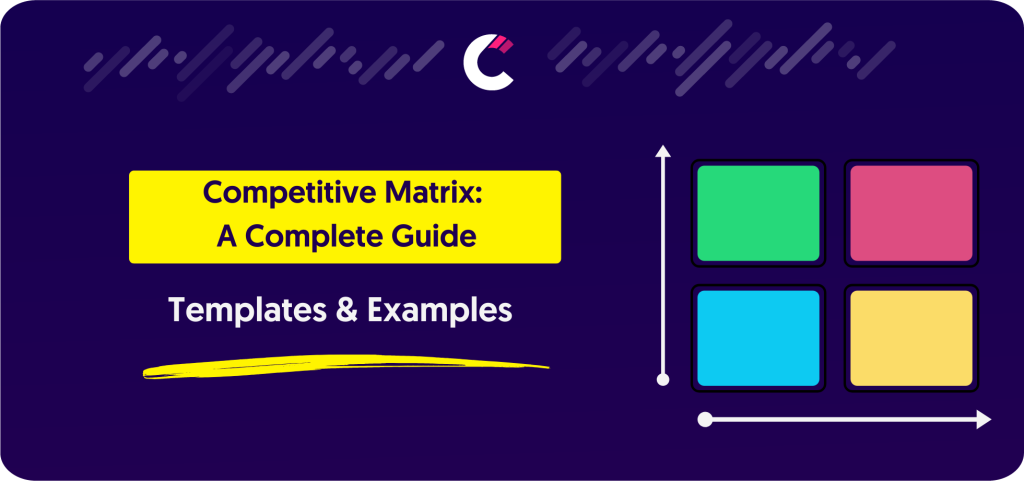
In business, knowing your competitors’ moves can be as crucial as planning your own. Whichever your business size, large or small, it’s trully essential to be able to predict your competitors moves and outperform competition. And there is no better way to do it than competitor analysis that results into a competitive matrix. But what is a competitive metrix, how is it created and how can you create yours. Fasten your seat cause we’ll dive right in.
The definition of a competitive matrix is really important to understand in order to understand how to use it. A competitive matrix, also called “competition matrix” is a strategic tool used to evaluate the competitive landscape of a business. It’s a grid that compares your company against key competitors based on various factors such as price, quality, features, and market share. This visual representation helps highlight where you stand in the market, what your competitive advantages are, and where there might be gaps in your strategy. It’s not just about knowing your rivals but also about self-awareness in the business ecosystem. By understanding both, you can make informed decisions that drive your company forward.
The use of a competitive matrix enables companies to make informed decisions about their market strategy, product development, and can even influence marketing campaigns and sales tactics. Moreover, it serves as a critical input for SWOT analysis, helping to shape a company’s strategic planning and future growth initiatives. The rest of this blog will cover more on how to create one, how to use it as well as templates and examples.
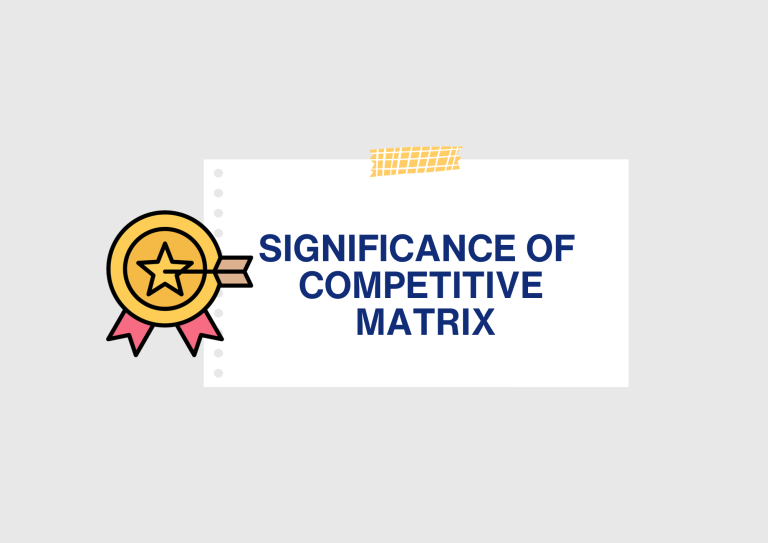
Understanding the competitive landscape is essential for any business strategy, and the competitor matrix serves as a vital tool in this quest. It provides a structured approach to evaluate how your offerings stack up against those of your rivals. With a well-crafted matrix, you can pinpoint where your business excels, where it falls short, and where there’s room to grow. It’s not just about keeping up; it’s about aiming to lead the pack. The insights gained from a competitor matrix can direct your business decisions, from product development to marketing strategies, ensuring that you invest wisely and effectively.
More specifically a competitive matrix can help in:

A competitive matrix serves as a crucial tool for strategic planning, offering numerous benefits that can help steer a company towards success. Here are some of the key advantages:
Incorporating a competitive matrix into your business analysis routine can significantly contribute to a more dynamic and responsive strategy, keeping you a step ahead in the marketplace.

1. Identify Key Competitors:
Start by listing current and potential competitors within your market. This forms the basis of your competitive matrix and ensures you’re comparing relevant entities.
2. Select Evaluation Parameters:
In this step, choose the criteria for comparison, such as price, quality, market share, customer service, innovation, etc. These parameters should reflect the factors most valued by your market and critical to your industry.
3. Gather Data:
Collect data on each competitor based on the selected parameters. This can include public information, customer feedback, market reports, and more.
4. Create the Matrix:
Using the gathered data, create a grid to plot each competitor against the chosen parameters. This visual tool will highlight where each competitor stands in relation to others.
5. Plot Competitors:
Place competitors on the matrix according to their performance on each parameter. This step may reveal leaders, laggards, and main threats in specific areas.
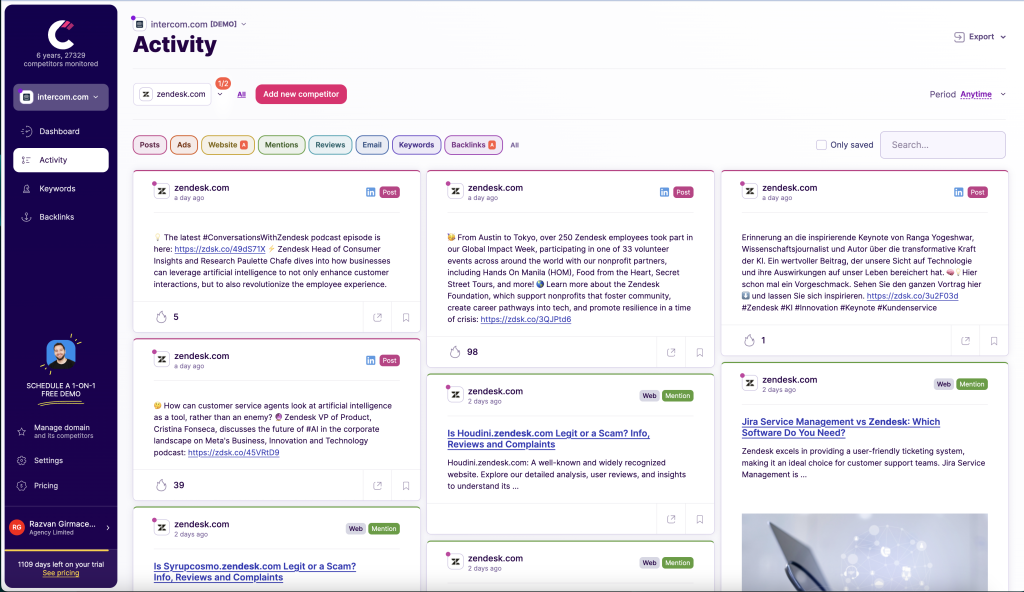
Gathering data for your competitive grid is a systematic process that can be streamlined using Competitors App. Here’s how you can leverage the features of Competitors App to collect the necessary information:
1. Start with the Activity Timeline: Use the dashboard to get an overview of all competitor activities. Look for trends in their marketing efforts, product updates, or customer engagement strategies.
2. Analyze Competitor Reviews: Dive into the reviews section to understand customer sentiment about your competitors. Look for recurring praises or complaints that could indicate strengths or weaknesses.
3. Analyze Brand and Market Share with Mentions: Utilize the Mentions feature to track how often and in what context competitors are mentioned online. This can give you insights into their brand presence and public perception. You can analyze how they are mentioned on social but also in other media channels like news, reviews or others.
4. Assess Performance Metrics: Compare SEO rankings, social media posts, and ad campaigns of your competitors. This will help you understand where they excel or fall short in their online strategies.
5. Visual Comparisons: Use the Competitors Benchmark Dashboard for a visual comparison of your company against competitors. Take screenshots to present to management, highlighting key areas where you outperform or can improve.
By following these steps, you can create a comprehensive competitive grid that provides a clear picture of where you stand in relation to your competitors and where you can capitalize on market opportunities.

Creating a competitive matrix is one thing but the important think to succeed in competitive intelligence is being rearlly good at analyzing one to develiver high-value competitive insights. Analyzing a competitive matrix requires a keen eye for detail and a strategic mindset. Here are some tips to effectively analyze your competitive matrix:
1. Look for Patterns: Examine the matrix for any apparent patterns or anomalies. Are there areas where your business consistently outperforms or underperforms?
2. Assess Market Gaps: Identify any market needs that are currently unmet by competitors. These gaps could represent opportunities for your business to differentiate itself.
3. Evaluate Competitor Clustering: Notice if competitors cluster together in certain areas of the matrix. This could indicate a saturated market segment or a common industry focus.
4. Consider Strategic Implications: Reflect on how the matrix insights align with your business strategy. Does the analysis suggest a need to pivot or double down on current strategies?
5. Actionable Insights: Use the matrix to generate actionable insights. For example, if the matrix reveals that competitors are not capitalizing on a particular customer service aspect, consider enhancing your offerings in this area.
Remember, the goal of analyzing a competitive matrix is not just to understand where you stand, but to inform strategic decisions that can lead to a competitive advantage.
In this section, we’ll guide you through the steps to create a competitive matrix using Microsoft Excel, focusing on market share and customer reviews as key metrics. This practical approach will help you understand your competitive landscape and identify areas for growth and improvement. Whether you’re a seasoned marketer or new to competitive analysis, this step-by-step guide is designed to provide you with a clear and actionable competitive snapshot.
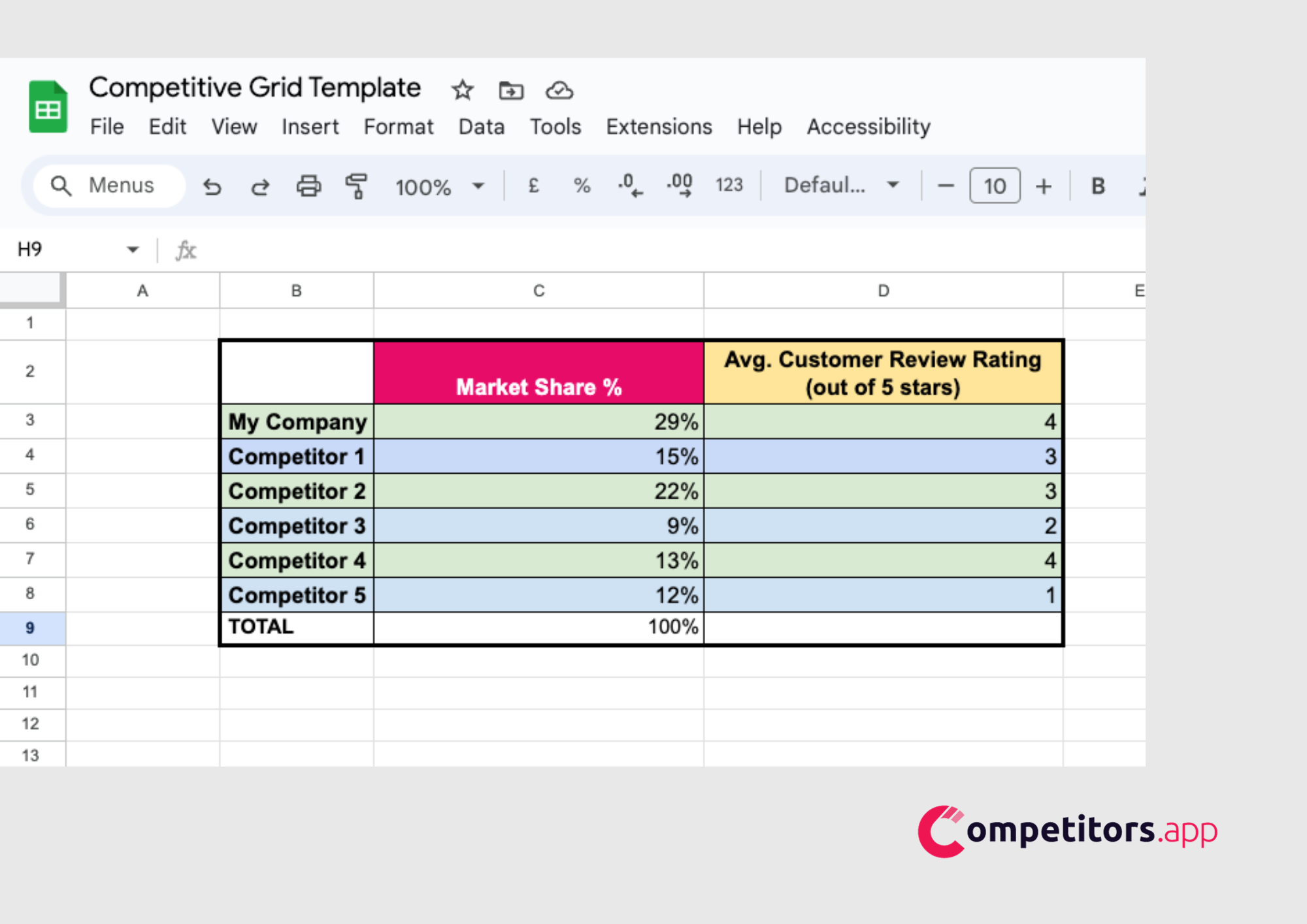
a) Open a new Excel spreadsheet.
b) List your company and competitors in Column A.
c) Enter each company's market share percentage in Column B.
d) In Column C, input the average customer review rating (for example, out of 5 stars).
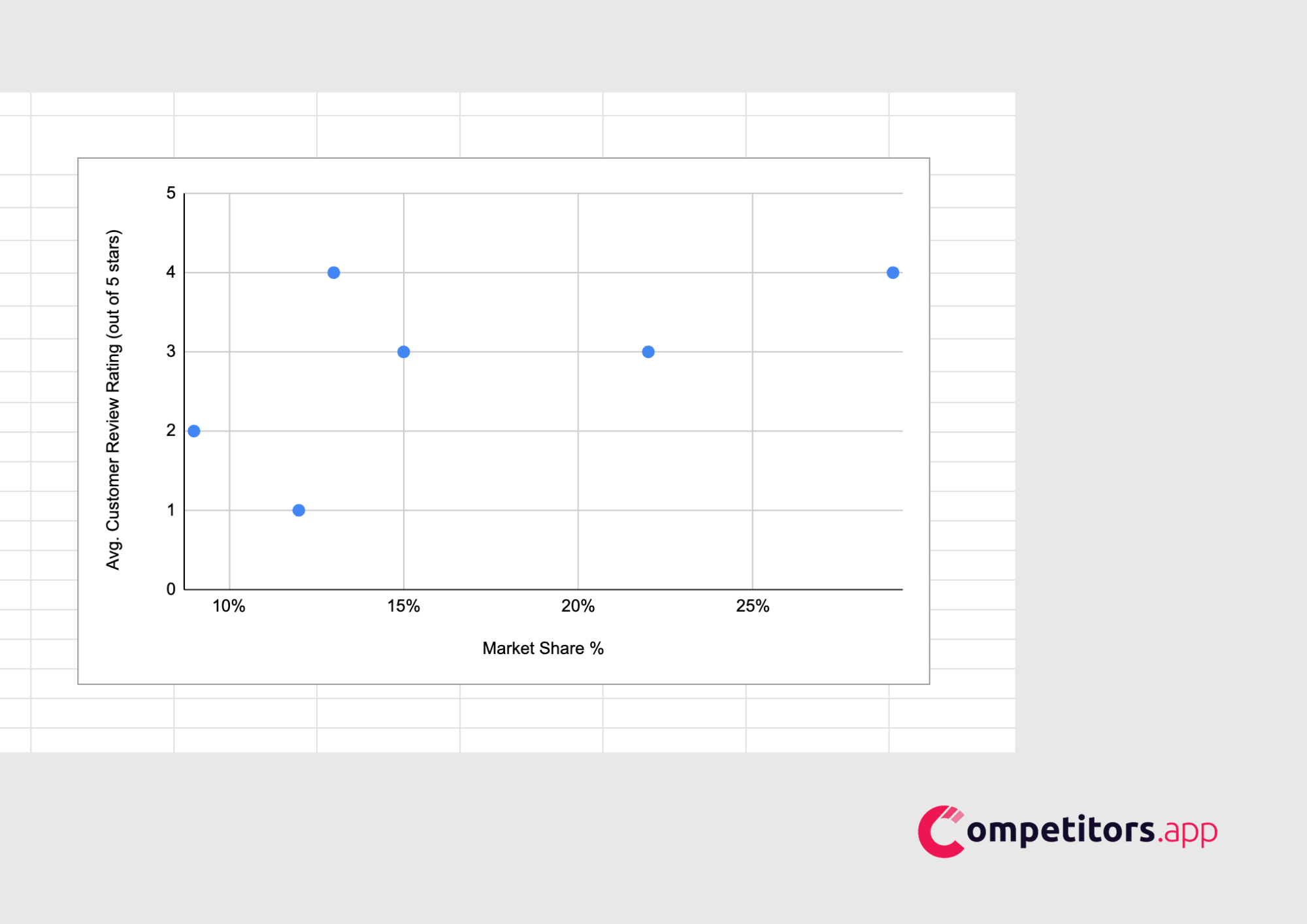
Highlight the data in Columns B and C, click on the 'Insert' tab, and choose a scatter plot to visualize the data.

Customize your chart by adding a title, "Market Share vs. Customer Reviews," and labeling axes for market share and average review rating.
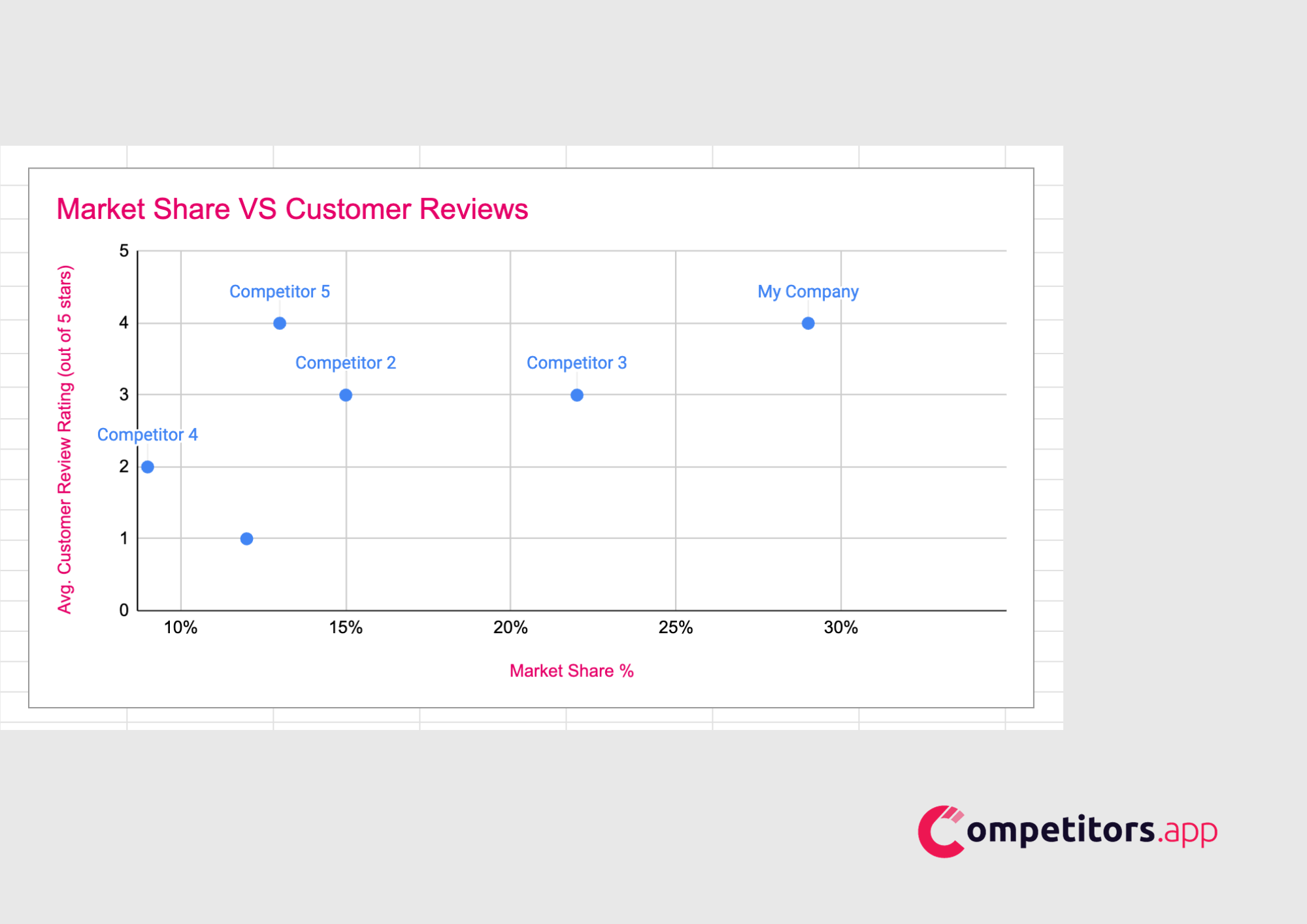
Add data labels to identify each point with the corresponding company name from Column A.
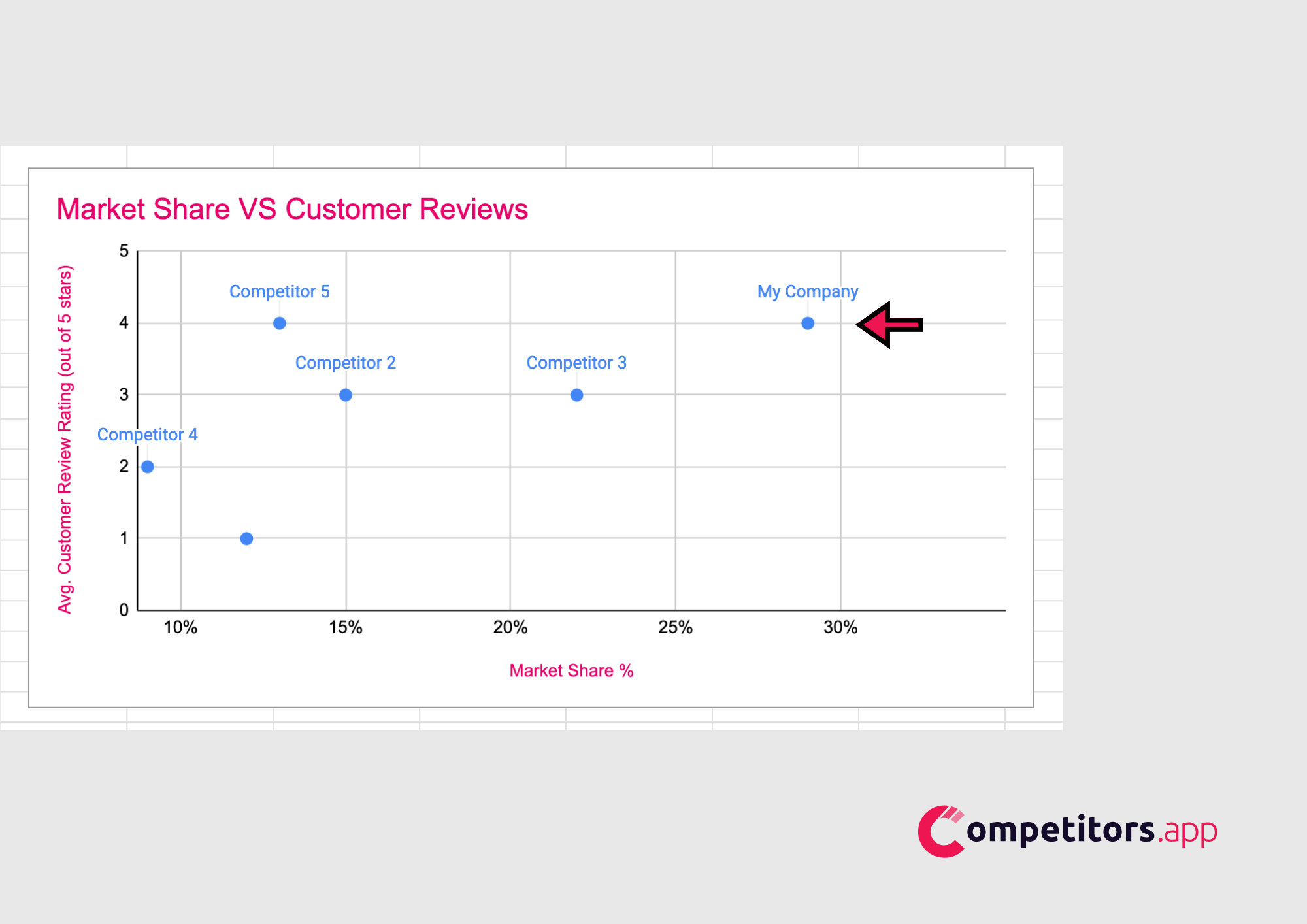
a) Review the scatter plot to see which companies have a strong market share and high customer ratings, indicating market leaders.
b) Use this insight to identify your position and strategize on improving market share or customer satisfaction based on the matrix findings.
Airtable: Combining the simplicity of a spreadsheet with the complexity of a database, Airtable allows you to organize work, people, and ideas in a collaborative online platform. Its interface is user-friendly, and it offers templates for competitive analysis, which can be customized to fit your specific needs. Airtable’s grid view works like a spreadsheet but has the added advantage of linking records between tables, offering a more dynamic way to manage competitive data.
Tableau: Ideal for those seeking advanced data visualization, Tableau can transform complex data sets into intuitive and insightful visual analytics. It’s a robust tool for creating a competitive matrix that can be updated in real-time as new data is integrated, providing a clear picture of the competitive landscape.
Microsoft Power BI: This suite of analytics tools helps you create a comprehensive competitive matrix through its user-friendly interface. Power BI is excellent for users who want to perform deep data analysis without a steep learning curve, offering a range of visualization options to make data more accessible.
Lucidchart: This web-based proprietary platform is excellent for creating diagrams and flowcharts, which can be used to map out competitive landscapes. Lucidchart offers real-time collaboration and is equipped with a variety of templates and design options, making it a versatile tool for businesses looking to visualize their competitive analysis in various formats beyond traditional spreadsheets.
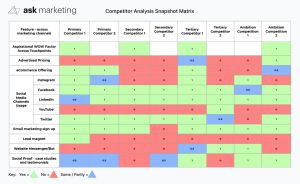
The Competitive Analysis Matrix is a framework that helps businesses evaluate their position relative to their competitors across various factors. It typically includes parameters like market share, product quality, brand reputation, and customer satisfaction. By plotting these factors in a matrix, companies can visualize where they stand in the competitive landscape and identify areas for improvement or differentiation. For instance, if a business finds it has a lower market share but higher customer satisfaction, it may decide to leverage its customer service excellence in marketing campaigns to increase market share.
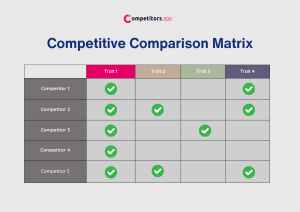
A Competitive Comparison Matrix, or a simple competition chart, is a tool used to compare your company directly with its competitors on a set of criteria deemed critical for success in your industry. This could include pricing, service offerings, technology use, customer service, and more. The simplicity of this matrix lies in its straightforward design, which allows for quick, at-a-glance comparisons. This matrix is particularly useful for identifying direct competitors and understanding how your company's offerings stack up against them.
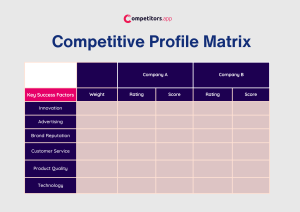
The Competitor Profile Matrix (CPM) allows businesses to profile key competitors and compare them based on strategic criteria. This matrix goes beyond surface-level analysis by delving into the operational, cultural, and strategic profiles of competitors. It can cover aspects such as management style, innovation, customer loyalty, and operational efficiency. A well-constructed CPM provides a comprehensive view of the competitive field and can reveal gaps in the market that your business might exploit.competi
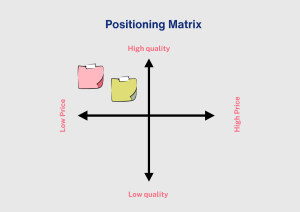
This matrix maps competitors based on two dimensions that are critical to customers, such as price level versus quality of service. The Competitive Positioning Matrix helps businesses understand how consumers perceive them in relation to their competitors. It's a valuable tool for strategic positioning and can guide decisions on whether to compete head-on or to find a niche market.
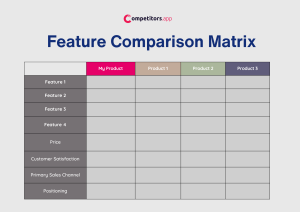
A Feature Comparison Matrix breaks down products or services into their constituent features and compares them across different offerings in the market. It's an effective way to highlight how your product stands out in terms of features, functionality, and benefits. This matrix is particularly useful for product development and marketing, as it can help identify which features are unique to your product and which ones are standard across the industry.
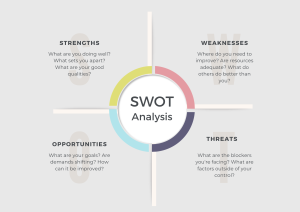
A SWOT Analysis is a strategic planning tool used to identify and analyze the Strengths, Weaknesses, Opportunities, and Threats of a business venture. It involves specifying the objective of the business or project and identifying the internal and external factors that are favorable and unfavorable to achieving that objective. A thorough SWOT analysis provides a strong foundation for strategy development by focusing on the most significant factors that affect business outcomes.
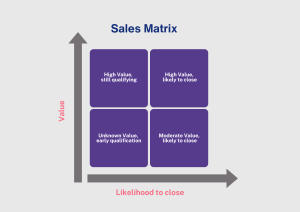
A Sales Matrix is used to analyze and improve sales performance. It can compare sales volume, growth, or profitability across different regions, products, or sales teams. This matrix helps sales managers identify high-performing areas and those that require more attention or resources.
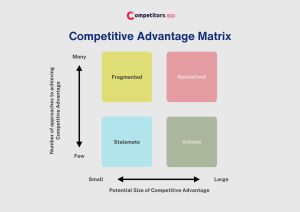
The Competitive Advantage Matrix helps businesses determine their competitive edge by evaluating two dimensions: the company's strength in the market and the life cycle stage of the industry. It's a strategic tool that can inform long-term planning, investment decisions, and market entry strategies.
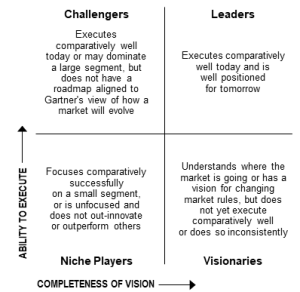
Gartner's Magic Quadrant is a research methodology and visualization tool for monitoring and evaluating the progress and positions of companies in a specific, technology-based market. It's highly influential and widely regarded as a go-to source for insights on technology vendors. The quadrant categorizes companies into four types: Leaders, Challengers, Visionaries, and Niche Players, based on their completeness of vision and ability to execute.
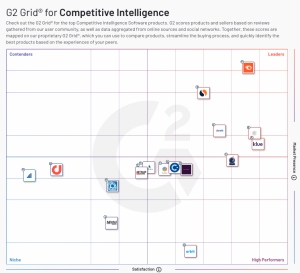
The G2 Crowd Grid is a market-specific tool that plots software products based on user satisfaction and market presence. It's used primarily in the software industry to help buyers choose the right tool for their needs based on peer reviews and social data. For a company, appearing on the G2 Crowd Grid with high user satisfaction can be a powerful endorsement, influencing potential customers' purchasing decisions.
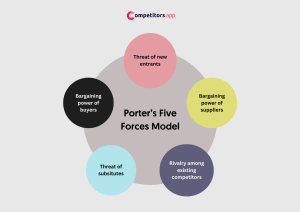
Porter's Five Forces is a model that identifies and analyzes five competitive forces that shape every industry and helps determine an industry's weaknesses and strengths. These forces are competition in the industry, potential of new entrants into the industry, power of suppliers, power of customers, and the threat of substitute products. Understanding these forces can help a company adjust its strategy to better use its resources to generate profit.
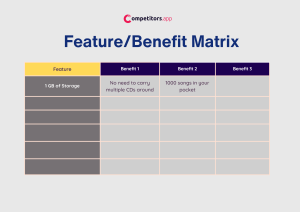
This matrix helps companies articulate the features of their products alongside the benefits each feature brings to the customer. It's a useful tool for aligning product development with customer needs and for creating marketing messages that resonate with the target audience.
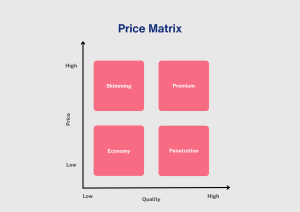
A Price Matrix is used to compare the pricing strategies of different products or services in the market. It can help businesses understand how their pricing fits within the competitive landscape and whether there's an opportunity to adjust pricing strategies for competitive advantage.

The Growth Share Matrix, also known as the BCG Matrix, developed by the Boston Consulting Group, categorizes a company's products or services into four categories based on market growth and market share: Stars, Cash Cows, Question Marks, and Dogs. This matrix helps companies allocate resources and prioritize investments based on the products' current and potential performance.
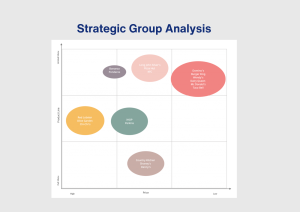
Strategic Group Analysis involves grouping companies within an industry that have similar business models or strategies. By analyzing these groups, companies can identify mobility barriers that protect a group from attacks by other groups and find new spaces in the market to occupy.
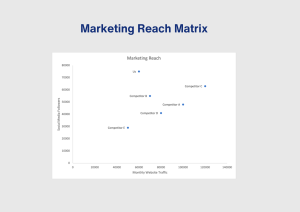
The Marketing Reach Competitor Matrix compares the marketing reach of different companies, often using metrics like website traffic, social media presence, and brand awareness. It's a valuable tool for understanding the effectiveness of marketing strategies and the brand's visibility compared to competito
Beyond the commonly known matrices, there are several other strategic frameworks that businesses can employ to analyze their competitive landscape and internal capabilities. Here are a few notable ones:
Ansoff Matrix: The Ansoff Matrix, also known as the Product/Market Expansion Grid, is used to determine growth strategies by considering existing and new markets, as well as current and new products. It helps businesses evaluate the risks associated with growth strategies, including market penetration, market development, product development, and diversification.
Perceptual Mapping: Perceptual Mapping is a visual technique used to compare the perceptions of different brands or products. By plotting customer perceptions along two or more dimensions, such as price and quality, businesses can identify how consumers view their brand in relation to competitors and spot market gaps or areas for repositioning.
McKinsey Matrix: Also known as the GE-McKinsey Nine-Box Matrix, this tool assesses business portfolio strengths and industry attractiveness. It helps companies decide which business units should receive more or less investment, and it’s particularly useful for large corporations with multiple divisions or product lines.
Value Discipline Model: This model suggests that companies excel by delivering superior customer value through one of three disciplines: operational excellence, customer intimacy, or product leadership. The matrix helps businesses understand their current positioning and guides strategic focus for competitive advantage.
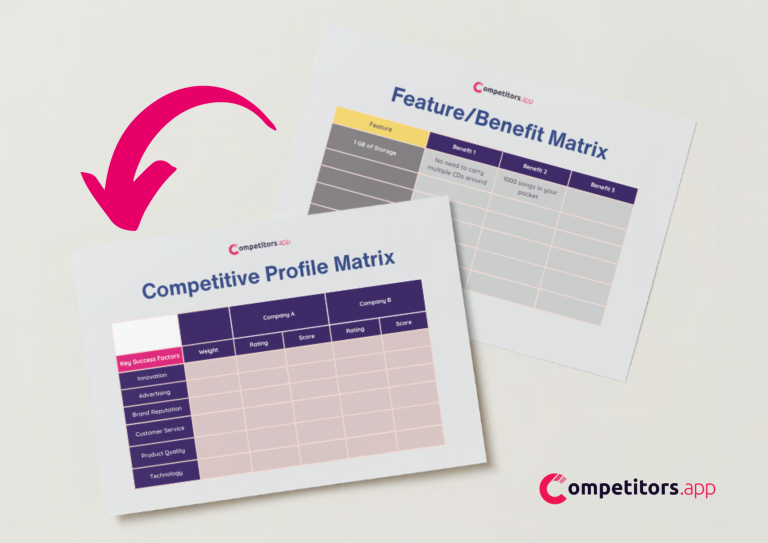
Download Your Competitive Matrix Template
Get your free template by submitting this form and turn competitive analysis into your strategic advantage.
Interpreting a competitive matrix goes beyond just knowing who your competitors are; it involves a deep dive into strategic analysis to guide your business decisions. Here’s a more detailed approach to extracting value from your competitive matrix:
Spotting Trends and Patterns: Look for consistent indicators across competitors that signal industry standards or emerging trends. This could be a commonality in service offerings or a gap that multiple competitors are missing, which you could exploit.
Benchmarking Performance: Use the matrix to measure how your company stacks up against others in key areas like product features, customer service, and innovation. This benchmarking can reveal areas for improvement and highlight where you’re leading the pack.
Strategic Decision-Making: The matrix should inform your strategic choices. For instance, if you notice that all major players are competing on price, you might choose to differentiate on quality or customer experience instead.
Prioritizing Actions: Based on your analysis, prioritize initiatives that align with your business goals. If the matrix shows you’re lagging in market share but have high customer loyalty, you might focus on marketing campaigns that leverage customer testimonials to attract new business.
Long-Term Planning: The competitive matrix isn’t just for immediate action; it’s also for long-term strategy. Use it to forecast future industry shifts and plan accordingly, whether that’s investing in new technology or pivoting to a different customer segment.
By thoroughly analyzing your competitive matrix, you can gain insights that lead to a stronger competitive position and a more robust strategy for growth.
Identifying your competitive advantage is crucial for any business strategy. A competitive matrix can illuminate your unique position in the market by comparing your company’s performance against that of your competitors across various factors. Here’s how to use a competitive matrix to pinpoint your competitive edge:
Unique Offerings: Highlight any features, services, or products that only your company offers. These are direct indicators of your unique value proposition and can be a significant draw for customers looking for specific solutions.
Performance Metrics: Assess where your company outperforms competitors. This could be in areas like customer satisfaction, speed of service, or technological innovation. High performance in these areas can be leveraged in marketing and sales efforts.
Cost Efficiency: If your matrix shows that you deliver products or services at a lower cost or with better efficiency, this can be a strong competitive advantage. It’s important to understand how these cost savings can be passed on to customers or reinvested into the business for growth.
Brand Strength: Evaluate how your brand is perceived in comparison to your competitors. Strong brand recognition and loyalty can be a formidable advantage, as they often translate to repeat business and customer referrals.
Market Niche: Identify if your business serves a particular niche better than competitors. Specializing in a niche market can set you apart and protect your business from broader market fluctuations.
By systematically evaluating these aspects within a competitive matrix, you can uncover and begin to capitalize on your competitive advantages, ensuring that your business not only survives but thrives in a competitive landscape.
Evaluating your market position is a dynamic process that involves understanding where your business stands in relation to competitors. A competitive matrix serves as a visual aid to map out this positioning, providing insights into how your business is perceived in the marketplace. Here’s how to evaluate your market position effectively:
Market Share: Use the matrix to compare your market share against that of your competitors. A larger market share can indicate a strong position, but it’s also important to consider the context of market growth or decline.
Growth Trajectory: Analyze the growth rates of your company and competitors over time. The matrix can help visualize who is gaining market ground, who is stagnant, and who is declining, which can inform strategic decisions.
Customer Base: Consider the size and loyalty of your customer base in comparison to your competitors. A loyal customer base can be a sign of a strong market position, even if overall market share is smaller.
Product/Service Range: Evaluate the diversity and breadth of your product or service offerings. A wide range can indicate a robust market position, as it may appeal to a broader audience.
Reputation and Branding: Assess public perception and brand strength. The matrix can highlight how brand reputation impacts market position, with strong brands often commanding more influence and higher pricing power.

In the competitive world of online courses, one company leveraged a competitive matrix to uncover a golden opportunity. Their ppc analysis revealed a widespread issue among competitors: poor handling of payment refunds. Seizing this chance, the company launched targeted campaigns emphasizing their efficient refund process, which resonated with frustrated customers from other services. This strategic move, rooted in competitive intelligence, not only enhanced their brand image but also led to tangible results. Without significant additional spending, they witnessed their marketing ROI soar and their product sign-ups double within two months, a testament to the power of a well-executed competitive matrix in action.
Turning a competitive matrix into action for your business involves a few strategic steps. First, conduct a thorough analysis to identify gaps in your competitors’ offerings or service. Look for patterns or recurring issues that customers are vocal about, such as slow service, limited features, or high costs. Once you’ve pinpointed these areas, brainstorm how your business can address these pain points effectively.
Next, develop targeted campaigns or product enhancements that directly speak to these weaknesses. If you find that competitors are weak in customer service, for instance, invest in training for your team and highlight this strength in your marketing materials.
Finally, measure the impact of your actions through increased customer acquisition, satisfaction scores, or sales metrics. Adjust your strategy based on customer feedback and market response to ensure continuous improvement and leverage your competitive edge. By doing so, you can transform insights from a competitive matrix into successful business outcomes.
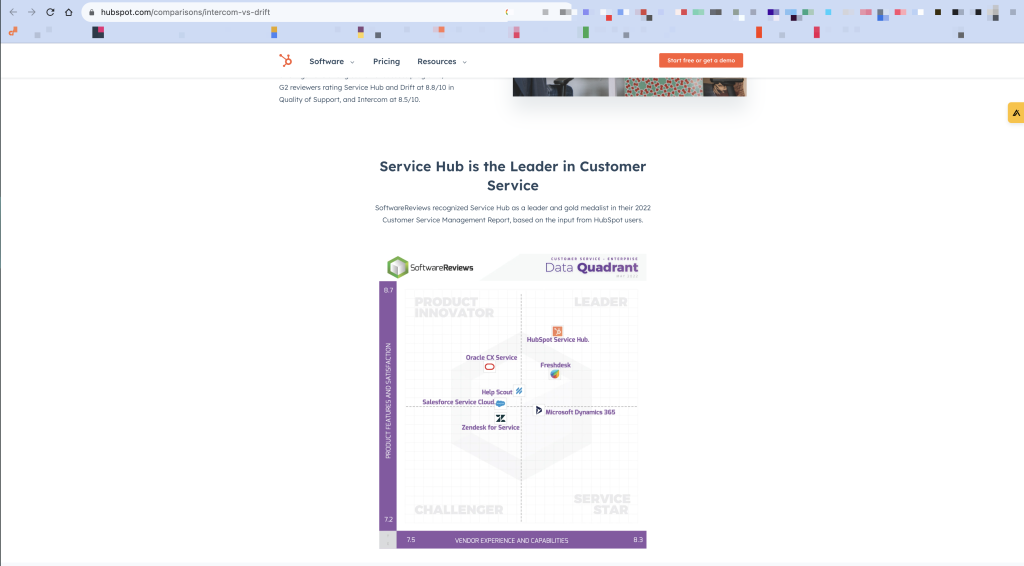
On their website, HubSpot strategically targets the keyword “Drift VS Intercom,” positioning their offerings in direct comparison with these competitors. They leverage a competitive matrix to clearly articulate their market superiority, providing compelling evidence and detailed analysis to persuade potential customers of their CRM’s leading edge over Drift and Intercom. This approach not only enhances their SEO efforts but also serves as a valuable decision-making tool for readers considering their options in the CRM space.
In conclusion, a competitive matrix is an invaluable tool for businesses seeking to gain a strategic edge in their industry. By systematically comparing your company against competitors across a range of key parameters, you can uncover unique insights that drive informed decision-making. Whether it’s through identifying your competitive advantages, evaluating market position, or seizing new opportunities, the competitive matrix serves as a roadmap for growth and innovation.
For those looking to dive deeper into competitive analysis, tools like Competitors App offer a streamlined, efficient way to monitor competitors and market trends. With features designed to simplify data collection and analysis, Competitors App can save you time and provide the intelligence needed to stay ahead of the curve.
Remember, the landscape of competition is ever-changing, and staying updated with a regularly refreshed competitive matrix is crucial. It’s not just about understanding where you stand today but also about anticipating where the market is heading tomorrow.
You should update your competitive matrix regularly to reflect any significant market changes, new competitor activity, or internal business developments. For most businesses, a quarterly update is sufficient, but if you're in a fast-paced industry, you might consider updating it monthly.
No, the BCG matrix is not a SWOT analysis. While SWOT focuses on strengths, weaknesses, opportunities, and threats of a business, the BCG matrix assesses the relative market share and market growth of products or business units.
The BCG matrix simplifies the analysis into high/low categories for market growth and market share, while the GE McKinsey matrix uses a more complex set of factors to evaluate business units, including market attractiveness and business unit strength.
No, the BCG matrix is not a SWOT analysis. While SWOT focuses on strengths, weaknesses, opportunities, and threats of a business, the BCG matrix assesses the relative market share and market growth of products or business units.
Absolutely. Small businesses can use competitive matrices to understand their position in the market, identify growth opportunities, and make strategic decisions based on a clear analysis of their competitive landscape.
Yes, there are several tools available for creating a competitive matrix, including Microsoft Excel, Google Sheets, and specialized software like Competitors.app, which can automate data collection and analysis.
Data for a competitive matrix can be gathered from various sources, including market research reports, public financial records, customer surveys, industry databases, and competitor observation.
Yes, a competitive matrix can help in crisis management by providing a clear view of the competitive landscape, which can inform strategic pivots or highlight areas of opportunity in times of crisis.
A competitive matrix compares multiple companies across various factors, while a SWOT analysis is typically used to evaluate one company's internal and external environment.
Identify primary competitors by looking at companies that offer similar products or services, target the same customer base, or operate in the same geographic region. You can also use Competitors.app to find your best competitors.
Consider parameters such as price, quality, market share, growth rate, customer satisfaction, and brand recognition when conducting a competitive matrix analysis.
Reliable data can be found through industry reports, business news, company publications, trade associations, and analytics tools like Competitors App.
The steps include identifying competitors, selecting parameters for comparison, gathering data, creating the matrix, plotting competitors, and analyzing the results.
Interpret the results by looking for patterns and outliers that indicate competitive strengths and weaknesses, market opportunities, and threats.
Use insights to refine marketing strategies, improve product offerings, adjust pricing, and target new market segments.
Capitalize on market opportunities by aligning your business strategies with customer needs and gaps left by competitors.
Diversify your product line, strengthen customer relationships, and stay informed about industry changes to mitigate potential threats.
Analysis in action involves applying the insights gained from the competitive matrix to make strategic decisions, such as entering new markets, adjusting pricing strategies, or launching marketing campaigns.